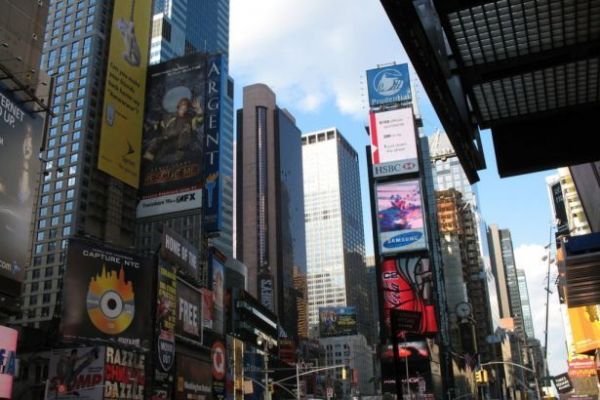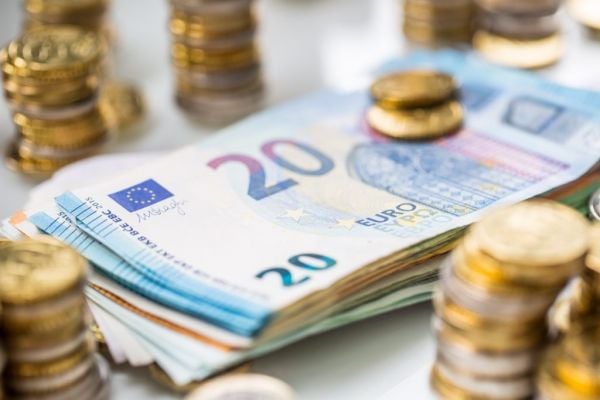The US economy grew faster-than-expected in the third quarter, again defying dire warnings of a recession, buoyed by robust consumer spending amid a resilient labor market.
The fastest growth pace in nearly two years reported by the Commerce Department's Bureau of Economic Analysis recently in its advance estimate of third-quarter gross domestic product was also spurred by a rebound in residential investment after nine straight quarterly declines.
Businesses ramped up the restocking of warehouses and shelves to meet the strong demand.
But business investment softened as outlays on equipment declined and the boost from the construction of factories faded. President Joe Biden's administration has taken steps to encourage more semiconductor manufacturing in the United States.
'Robust Growth'
While the robust growth pace notched last quarter is likely not sustainable, it showcased the economy's stamina despite aggressive interest rate hikes from the Federal Reserve.
Still, growth could slow in the fourth quarter because of the United Auto Workers strikes and the resumption of student loan repayments by millions of Americans.
Most economists have revised their forecasts and now believe the Fed can engineer a "soft-landing" for the economy, citing expectations that the July-September period will show a continuation of second-quarter strength in worker productivity and moderation in unit labor costs.
"Economic growth transitioned from resilience to re-acceleration this quarter, defying the Federal Reserve's aggressive tightening cycle and tighter financial conditions," said Olu Sonola, head of US economics at Fitch Ratings in New York.
Gross domestic product increased at a 4.9% annualized rate last quarter, the fastest since the fourth quarter of 2021.
Economists polled by Reuters had forecast GDP rising at a 4.3% rate.
The economy grew at a 2.1% pace in the April-June quarter and is expanding at a pace well above what Fed officials regard as the non-inflationary growth rate of around 1.8%.
Consumer Spending Increase
Growth in consumer spending, which accounts for more than two-thirds of US economic activity, accelerated at a 4.0% rate after only rising at a 0.8% pace in the second quarter.
It was driven by spending on both goods and services.
Consumers spent more on housing and utilities, healthcare, financial services and insurance.
They dined out and stayed at hotels and motels.
Consumers also bought more recreational goods and vehicles, and boosted outlays on nondurable goods like prescription medication. The labor market is providing underlying support to spending. Though wage growth has slowed, it is rising a bit faster than inflation, lifting households' purchasing power.
US stocks opened lower. The dollar was steady against a basket of currencies. US Treasury yields hovered at higher levels.
Slowdown Ahead
But risks are growing for spending. Student loan repayments resumed in October, which economists estimated was equal to roughly $70 billion, or around 0.3% of disposable personal income, and could dent spending.
Though excess savings accumulated during the pandemic remain ample, they are largely concentrated among high-income households.
Low-income consumers are increasingly relying on debt to fund purchases, with higher borrowing costs boosting credit card delinquencies.
Last quarter, the increase in wages was partially offset by a rise in personal taxes.
That led to income at the disposal of households after accounting for taxes falling at a 1.0% pace last quarter.
The result was that consumers dipped into their savings to fund some of their spending.
The saving rate decreased to 3.8% from 5.2% in the third quarter.
Some economists see a sharp slowdown around the corner.
Others are not too concerned, noting the labor market continues to churn out jobs at a solid clip.
Labor market resilience was highlighted by a separate report from the Labor Department on Thursday, showing the number of people filing new claims for state unemployment benefits rose 10,000 to a seasonally adjusted 210,000 during the week ending 21 October.
Claims are at the very low end of their range of 194,000 to 265,000 for this year.
The GDP data likely has no impact on near-term monetary policy amid a surge in US Treasury yields and a stock market selloff, which have tightened financial conditions.
Inflation
While the report showed overall inflation picking up last quarter, underlying price pressures continued to abate.
The price index for personal consumption expenditures (PCE) excluding food and energy increased at a 2.4% rate after rise at a 3.7% pace in the second quarter. The so-called core PCE price index is one of the inflation measures tracked by the Fed for its 2% target.
Financial markets expect the US central bank to keep interest rates unchanged at its 31 October - 1 November policy meeting, according to CME Group's FedWatch. Since March of last year, the Fed has raised its benchmark overnight interest rate by 525 basis points to the current 5.25% to 5.50% range.
Read More: US Consumer Sentiment Weakens In October
News by Reuters, edited by Donna Ahern, Checkout. For more retail stories, click here. Click subscribe to sign up for the Checkout print edition.






